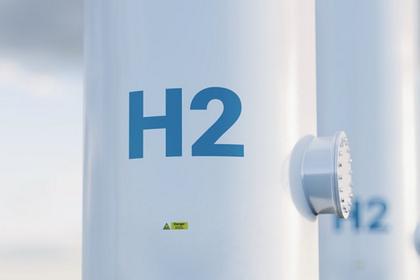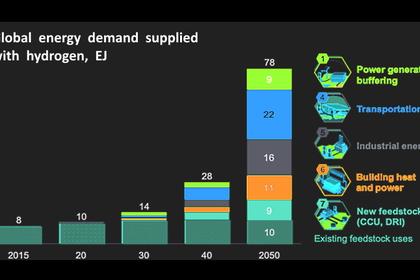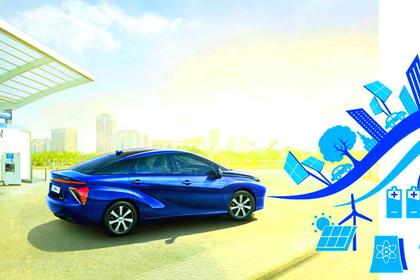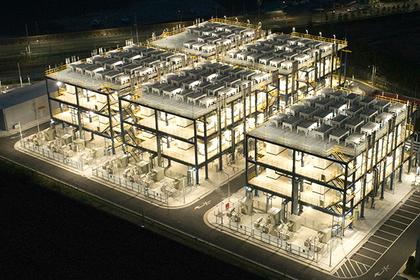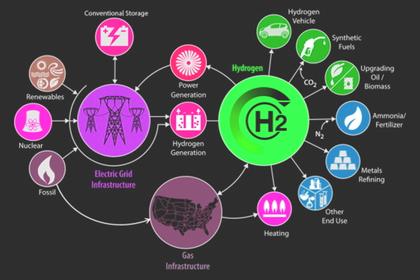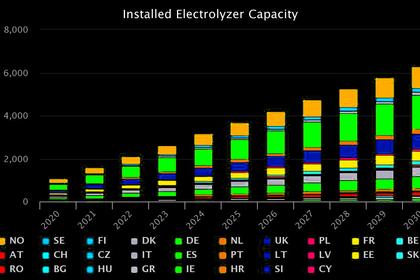
HYDROGEN FOR ENERGY TRANSITION

By Paul Hobcraft Innovation Knowledge Provider Agility Innovation
ENERGYCENTRAL - Hydrogen is undoubtedly becoming the big agenda ticket within any Energy Transition. It is the promise of being a central pillar for many parts of the world to achieve their decarbonization targets to get as close as they can to zero carbon by mid-century.
Hydrogen seems to hold, it seems, such a promise, but it is nearly all to do. There is so much to validate, prove, and certainly scale. We have some exciting pilots, even some emerging commercial-scale projects.
Still, these pilots or pockets of limited commercialization are not connected up or integrated into a Hydrogen Economy. So far we are not able to scale sufficiently to generate that same unstoppable momentum that Wind and Solar as sustainable renewables are achieving, in dislodging fossil fuels.
Today we do not yet have a Hydrogen infrastructure, market and price competitiveness, or overarching policies to build into a movement that shifts the energy needle.
We have lots of desire and willingness, some recent infusion of development money, especially here in Europe, but we do need to now make hydrogen really happen on a commercially sustainable basis.
Understanding Hydrogen and its future value and importance is my point of reference, relating to the context, complexities, and creative, exploratory tensions that exist, as we focus on finding scalable solutions for Hydrogen.
The ability to scale Hydrogen is complex to be able for it to achieve this central pillar of being the principal energy carrier.
I want to identify the necessary capacities, competencies, and capabilities to undergo this hydrogen journey. The ultimate aim is to identify outcomes that can become ones that give additional focus to knowing which are valuable.
Also, which aspects need to extend the existing solutions and which have limited or no value and those resources and capital should be released to be redirected onto the ones that hold promise, impact, and value.
There is value in mapping out the Hydrogen terrain
Mapping out the hydrogen terrain to the task at hand enables us to understand and relate to what is needed – I call that the context for change.
I have been investigating Hydrogen as a promising energy carrier to understand the barriers and obstacles to the energy transition we need to undertake. There are so many underlying “tensions” in this change from established fuels, infrastructure, and product delivery that Hydrogen needs to overcome.
In my mind, any Energy Transition Fitness Landscapes needs to identify the opportunity spaces on where you need to focus your efforts- the appropriate resources to navigate the terrain. The higher the ‘fitness’ transforms your landscape potential into accelerating opportunities into final tangible outcomes.
Fitness Landscapes helps in this task of discovering tangible outcomes, by identifying the opportunity spaces on where you need to focus your efforts‐ and apply the appropriate resources to navigate the terrain.
The greater understanding of the ‘fitness points needed’ can transform your hydrogen landscape potential, or in business parlance, achieve your goal or mission objective.
My approach here is a work-in-progress; it will evolve and adapt.
These are my “opening pass” of the expected results or points of investigation sought; by identifying the critical aspects of capability identification for the Hydrogen (or any energy transformation journey), to make it a significant contributor to the Future Energy Mix.
The outputs need to meet these objectives shown below to give this work value and worth to be considered
- Achieving a greater understanding of the obstacles and barriers to Hydrogen, so it does become a significant energy carrier in the future energy mix is critical to understand. It “conveys” the fitness points within the landscape journey.
- To understand what needs to be changed moves Hydrogen towards an energy transition that is sustainable and evolutionary, collaborative and sharing, one built on technology investigation, validation, and ability to scale. Solutions gain world-wide recognition and adoption as the resulting outcomes and processes from discovery to realization.
- The journey generates a learning process for the identification of real and ‘false’ dynamic capabilities. Dynamic capabilities bring about change in the environment. As we frame, we can identify differences separating the more static ones, that often just need reinforcement or retirement as not of lasting value to reallocate resources to the more promising ones. The more “dynamic” in impact and influence the more important to place resources and commitment behind.
- Pursuing limited or ‘selective’ development allows for potentially more accelerated exchanges within a network of specialization. These will not have the desired effect to accelerate solutions unless the broader network effects are not accounted for, in building the Hydrogen Infrastructure or market demand for example.
- Any fitness landscape journey, where change is a significant level of requirement, requires a holistic view of the existing issues and the intent and goal of the journey by framing a clear strategic plan to mobilize the necessary forces. This needs constantly “mapping” back too.
- The solutions suggested will generate discussions, further stimulate ongoing research. The growing recognition of the realities of the present, and what needs to change for future needs slowly get revealed in knowledge accumulation, for more focused resource allocation and capital allocation.
- Discovering the importance of linking capability across different activities or technology applications requires the building of ecosystems to become increasingly ‘dynamic’ for a more sustainable future built on constant exchange.
- The aim is to build out a clear capability portfolio knowing where resource needs to be applied and their likely timeframe from concept to fruition. These evaluations will also help identify synergies to bring new value and future impact options.
- We need to challenge long, well-established routines and processes to see how we can extend technology options. To discover and continue the existing can be valuable to place additional resources behind.
- Having clarity in the fitness landscape allows for regularly taking additional “adaptive walks” to learn and adjust current thinking and question alternatives more openly.
- Knowing your capabilities, competencies, and capabilities intensifies and solidifies the studies, the values of investigation, and the importance of innovation and discovery through greater engagement and a growing understanding.
- You achieve greater confidence in where to invest new capital and resources by having a robust portfolio of options that can be “whittled down” as you move through the innovation pipeline from discovery into validation.
- Outcomes from these expected results raise the capacity for a greater dynamic capability. Placing the emphasis on the importance of dynamism for more flexibility and fitness discovery is identifying the higher points of value. Through this, you accelerate the change process and plot different projects and their impact as outcome specific.
So far, I have had a relatively “intense” exploratory journey extracting the aspects of managing hydrogen.
I need to begin to evaluate the value of knowing the real part of any hydrogen ‘fitness’ and what makes up its distinctive dynamic capabilities that moves it towards the solutions we need to have in place to contribute in significant ways to the energy transition that is underway.
These solutions can be, but are not limited to; Technology and Innovation, Scale and Adoption, Infrastructure and Market Conditions, Government Engagement and Involvement, Industry, and critically vital Public adoption.
Hydrogen holds such promise but it is now the need for this to be realized
The more you investigate Hydrogen, the more you realize the complexity of what needs to be achieved to deliver what has been suggested; that Hydrogen could meet 24% of the world’s final energy demands by 2050. Today it provides around 1%.
I find it hard to imagine the change our energy systems need to undertake. They are massive and complex. To move energy and power generation from reliance on Oil, Gas, and Coal and make these energy solutions sustainable, economic, and reliant on the sustaining renewables of Solar, Wind and, Water- suggested at a level of real global magnitude, I find it hard to grasp but grasp we must.
All I do know is that we have to decarbonize our world, rid ourselves of the greenhouse gases that are polluting our planet. It is the combination of combining the renewable resources of Wind, Solar, and Water with hydrogen as the primary energy carrier, does seem to be the most promising combination to get us to net-zero emissions as soon as we can.
-----
This thought leadership article was originally shared with Energy Central's Energy Collective Group. The communities are a place where professionals in the power industry can share, learn and connect in a collaborative environment. Join the Energy Collective Group today and learn from others who work in the industry.
-----
Earlier:
